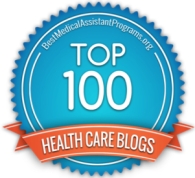I’m back, after an August filled with children, swimming, anniversaries and weddings. Two weekends in a row of travel and I’m glad to be home. Which reminds me of a subject I have long wanted to write about: The Medical Home.
Here is how the US Department of Health and Human Services describes The Medical Home (TMH for short): “The medical home model holds promise as a way to improve health care in America by transforming how primary care is organized and delivered. Building on the work of a large and growing community, the Agency for Healthcare Research and Quality (AHRQ) defines a medical home not simply as a place but as a model of the organization of primary care that delivers the core functions of primary health care.” AHRQ says that medical homes provide care that is Comprehensive, Patient-Centered, Coordinated, Accessible, and has Quality and Safety measures.
Here’s how the Patient-Centered Primary Collaborative defines TMH: “The medical home is best described as a model or philosophy of primary care that is patient-centered, comprehensive, team-based, coordinated, accessible, and focused on quality and safety. It has become a widely accepted model for how primary care should be organized and delivered throughout the health care system, and is a philosophy of health care delivery that encourages providers and care teams to meet patients where they are, from the most simple to the most complex conditions. It is a place where patients are treated with respect, dignity, and compassion, and enable strong and trusting relationships with providers and staff. Above all, the medical home is not a final destination instead, it is a model for achieving primary care excellence so that care is received in the right place, at the right time, and in the manner that best suits a patient’s needs.” The collaborative claims improvements in cost, utilization, population health, prevention, access to care, and patient satisfaction.
If all this sounds familiar, that’s because it is essentially a re-wording of the push to control costs by having care channeled through primary care doctors back in the early 2000’s. That initiative, widely implemented, resulted in a lot of jobs for paper pushers but not a lot of cost savings. In fact, the idea of a medical home has been around since at least 1967, especially in the field of pediatrics. I am not against the concept; the goals are all laudable. The problem is that “home” means different things to different people.
The Medical Parasite Host: If you live in a rural area, your medical home likely consists of one guy, or girl. That MD or NP does everything. That person is your home.
The Medical Grass Hut: In this home, everybody sits on the dirt floor and shares everything. This happens in poor communities where a visit to the doctor takes all day and everyone hangs out in the waiting room with their kids and grandparents, sharing two overworked doctors and a medical student. You pay with chickens or potatoes.
The Medical Motel Room: This is where you stop in for some low-quality, one-the-go health care. Like stand-alone clinics, urgent care centers, and pharmacies. It’s quick, it’s cheap, and no one knows you were there.
The Medical Project: Better than a grass hut. It still takes all day to see a doctor, but now you have bathrooms.
The Medical Apartment: Here you get your own doctor. Until your employer changes your insurance coverage. Then you move and find another doctor. It works as long as your medical problems fit in the back of a Ford Escort.
The Medical Single Family Home: Its nice, its comfortable, its stable, you’re insured. You have to drive into the city for your comprehensive, patient-centered, coordinated, accessible, quality healthcare, run by a healthcare conglomerate, but you have a car. Or know someone who does.
The Medical Mansion: You get all the care you want, when you want it. It’ll cost you, but it’s worth it because you don’t have to wait like everyone else.
The Medical Estate: The doctors come to your house. With MRI machines in trailers.
The Medical Home is a nice idea, and it works well in areas of the country where people are insured and have reliable transportation to centers that provide all the services TMH promises, that is, people in the middle. Rich people can buy their homes. Poor people either have low-quality homes provided for them or have no home at all. They drag their health problems with them from place to place, staying in motel rooms when they can, visiting the grass hut when they can’t. The ACA is trying to get everyone into at least an apartment. Even if it’s in a bad neighborhood.

